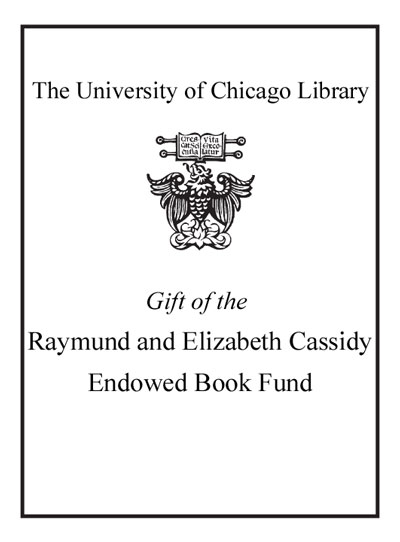Escultura amerindia : historia, mitos, semiótica, estética : Norteamérica, Mesoamérico, Centroamérica, Suramérica : catálogo antológico se han seleccinado 1365 obras /
Saved in:
| Author / Creator: | Sondereguer, César, author. |
|---|---|
| Imprint: | Bs. As. : Corregidor, [2020] ©2020 |
| Description: | 323 pages : illustrations, maps ; 28 cm. |
| Language: | Spanish |
| Series: | [Amerindia arte] Colección Amerindia arte. |
| Subject: | |
| Format: | Map Print Book |
| URL for this record: | http://pi.lib.uchicago.edu/1001/cat/bib/12697121 |
| Varying Form of Title: | Historia, mitos, semiótica, estética : Norteamérica, Mesoamérico, Centroamérica, Suramérica : catálogo antológico se han seleccinado 1365 obras |
|---|---|
| ISBN: | 9789500532792 9500532794 9789500537919 9500537915 |
| Notes: | Chiefly illustrated. Includes bibliographical references (page 323). |
| Summary: | Having analyzed, on several occasions, the thoughts of Ancient America, I dare to formulate these opinions regarding what was thought in the Argentine Northwest. Here two parallel and simultaneous languages coexisted in the plastic work: the signal and / or ideographic and the aesthetic-plastic. Both unhinge the ideological-mythical and express the religious-poetic. The signal and ideographic was configured with formal designs of figurations or symbolic abstractions and presents the mythical-religious, cosmic and cosmovisive. The design established the aesthetic and the facticity the artisanal or artistic. The plastic fact that has been determined today by the theory. The design named the mythical entity. Thinking was magical and established the causality and content of the entity: that was the foundation of iconography. Several types of vessels were made in series and supported mythical-religious images. Such images are unique and feature gods; therefore they are transcendent. Calling them decoration is fallacious and insulting. Creating organized forms is a function of an aesthetic. In this sense The cult work, for the most part, can be shown that its formal content has been composed harmoniously. The plastic work was volitional and necessary as a mythical-religious, signal, ideographic and aesthetic sacred work, which always configures for those peoples a new cosmic entity conjured. Thus he gave a hopeful sense to the daily reality, full of continuous terrifying incidents. |

Similar Items
-
Crítica de la obra plástica precolombina : reflexiones sobre morfología, semiótica y estética /
by: Sondereguer, César
Published: (2021) -
Civilización amerindia : tipología histórico plástica de las culturas precolombinas : Norteamerica, Mesoamerica, Centroamerica, Suramerica, 40.000 a.C.-1532 d.C. /
by: Sondereguer, César
Published: (1998) -
Seeing with new eyes : highlights of the Michael C. Carlos Museum collection of art of the Ancient Americas /
by: Stone, Rebecca, 1958-
Published: (2002) -
The Pre-Columbian Collection; [catalog]
Published: (1970) -
El monumentalismo de Amerindia : notas para una estética y su fundamento metafísico /
by: Sondereguer, César
Published: (1988)
